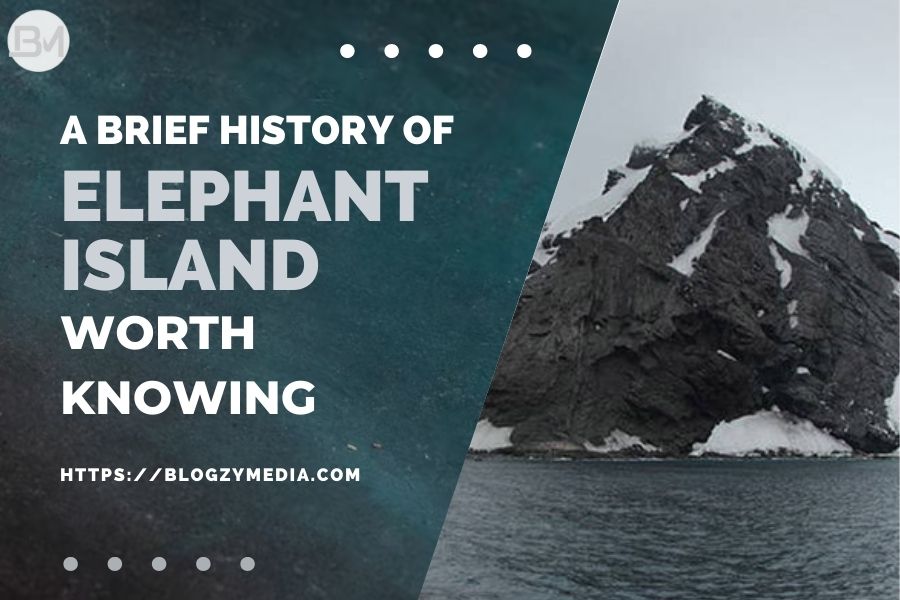
Elephant Island: Unraveling the Secrets (2025 Updated)
Introduction
Elephant Island is an ice-packed, mountainous island located in the outer sections of the South Shetland islands in Antarctica. It might seem ironic to say that this island is the most deserted place on Earth yet safe. But, it is what it is!
Concerning the island’s inhabitation, there is a lack of vegetation or permanent settlement. However, one can explore the temporary scientific research shelters or historic elements available there.
In the sections below, we will dive further into the island’s extensive history. There’s much more to explore on the island through expeditions, scientific research, historical monuments, etc.
The article will also discuss how to travel to this island by considering certain factors. Additionally, we’ll share specific travel resources like books, podcasts, and YouTube videos.
Henceforth, let’s unravel Elephant Island’s secrets in 2023!
A Brief History of Elephant Island Worth Knowing
Claims differ regarding the island’s name. Some claim that the island got its name from the Shackleton crew whereas others say it comes from elephant seals on the island’s shores.
Before the famous Endurance expedition on this island, let’s first look at the first Antarctic Russian expedition to the island in 1821.
This earliest Russian expedition was spearheaded by Fabian Gottlieb von Bellingshausen and Mikhail Lazarev. They first discovered this island on the 29th of January, 1821, and named it named Остров Мордвинова (“Mordvinov Island”) after Admiral Mordvinov.
The next one is the popular Endurance expedition that took place in 1916 when British explorer Ernest Shackleton sailed to scout the entire Antarctic continent. Elephant Island was the last resort for the crew when they found their ship (Endurance) stuck on the ice in the Weddell Sea.
Endurance’s 28 men found this island to be their best refuge. Perce Blackborow was the youngest crew member to arrive on the island. We’ll cover more about their survival stories in the sections below.
Geographic Features & Climate
The tallest point, Pardo Ridge, stands proudly at 853 meters (2,799 feet) above sea level. Get ready for some misty and snowy weather, with winds that can pack a punch, reaching speeds of up to 100 mph (160 km/h).
Along the island, you’ll come across some interesting places like Cape Yelcho on the northeastern and southern ends, Cape Valentine, Cape Lookout, and Sandbar Point Wild on the north coast. One of the highlights is the massive drift ice glacier called Endurance Glacier. So, put on your adventure hat to explore this captivating island!
Elephant Island is part of the Scotia metamorphic complex, which came to be through the erosion and transformation of marine sediments from the Cretaceous period in the Scotia subduction zone. The rocks you’ll find here, like phyllite, blueschist, and greenschist, are typical of accretionary wedges.
Similar in age and rock type to places like Catalina Island and the Big Sur Coast in California, this incredible place gives us a glimpse into ancient geological processes that shaped our planet. This island is also a standout spot for spherolite, a special phosphate mineral.
Flora & Fauna at Elephant Island
Although the island doesn’t boast a wide variety of plants and animals, keep your eyes peeled for some delightful visitors. During certain times of the year, you can spot migratory gentoo penguins and seals. If you’re lucky, you might even see nesting chinstrap penguins.
Now, here’s something interesting. Despite its prime location, ideally suited to scientific research, fishing, and whaling activities, the island needs more support for human settlement. The absence of safe anchorage spots makes it tricky for people to set up permanent homes here.
However, you can also find a monument to Endurance’s crew on the island. It is located on the Point Wild where the group created their camping site.
Elephant Island Survival Stories
Shackleton’s Endurance Expedition (1914-1916):
Sir Ernest Shackleton and his crew embarked on a daring Antarctic expedition aboard the ship Endurance. As a result, the ship got trapped in ice and ultimately sank.
The crew managed to reach this ice-packed island, but their survival was far from assured. Shackleton, along with a small group of men, set out on a heroic journey in a small lifeboat, the James Caird, to seek help on South Georgia Island, over 800 miles away.
After a treacherous two-week voyage, they miraculously reached their destination and rescued the rest of the crew from Elephant Island, bringing all 22 men back to safety.
In their battle against the never-ending darkness, they came up with some clever solutions. They crafted lamps using sardine tins, used surgical bandages as wicks, and burned seal blubber oil to light up their world.
After enduring this challenging situation for four and a half long months, Shackleton and his crew finally returned with a ship and saved all 22 men. It’s truly inspiring to see their courage and creativity in the face of difficulty!
Elephant Island Climate Change Impact
In November 2022, a report named, ‘Antarctica’s Tourism Boom Could Be Stressing Out Penguins’ was published in NC State. After covering the points on the distress caused by the human presence of the penguins, the report has also highlighted a significant shift in the decline of the colonies of the chinstrap penguins in Antarctica since 1971.
The breeding pairs of these penguins have experienced a drop from 122,550 to 52,786 in January 2020, all because of climate change. Also, the booming number of tourists poses a threat to the dropping population of Antarctica’s penguins.
According to the Scientific American article, it has been found that every year, the Antarctic ice sheet loses a staggering 200 billion metric tons of ice due to melting glaciers.
This contributes to about half a millimeter of global sea-level rise annually, and the rate of ice loss is increasing as time goes on. There are concerns among experts that if we experience prolonged and intense warming, it could trigger irreversible changes in the Antarctic ice sheet.
This might lead to the collapse of massive glaciers, resulting in catastrophic rises in global sea levels. While this scenario seems distant, scientists take it seriously and feel a growing sense of urgency to understand and address potential risks.
Traveling to Elephant Island
Traveling to elephant island might seem pretty hectic, especially when traveling for the first time. You will have to board specialized cruise ships to go to the island.
The sea surrounding the island is mainly packed with ice for most of the year i.e. from April to December. In the summer months of January and February, the island records a temperature of 1.5 degrees Celsius.
This island, with a population of zero, is primarily inhabited by researchers who camp there during the summer. On the island, there are no permanent inhabitants.
It falls within the Antarctic claims of countries such as the UK, Argentina, and Chile. The highest point on this Island is Pardo Ridge, standing at 853 meters above sea level.
The island experiences an average wind speed of 100 miles per hour and generally has a foggy climate with occasional snow. It is governed under the Antarctic Treaty.
If you’re hell-serious about visiting Elephant Island, we recommend you go through these books:
- isla elefante An Antarctic Expedition
- isla elefante and Beyond: The Life and Diaries of Thomas Orde Lees
- The Endurance: Shackleton’s Legendary Antarctic Expedition
You can also explore this Island tours at https://www.intrepidtravel.com/us/antarctica/elephant-island
Inspirations from Elephant Island
Taking inspiration from Ernest Shackleton, an Antarctic voyage was recreated by a rowing team led by Fiann Paul in December 2022. They departed on January 12 this year with a team of about 6 ocean rowers while being accompanied by a supervising vessel that housed the documentary film team and researchers.
And, guess what? They completed the mission by February after facing certain difficulties. You can trace their successful mission here.
During their mission, the team faced six days of seriously tough challenges – think wild weather with strong winds, cold conditions, and even icy icebergs!
Rowing in such waters requires thorough preparation, and Paul shares some key factors he considers while assembling a team.
- Firstly, rowers must have prior experience with ocean rowing not just on Elephant Island, but in general as well. It’s no easy feat, and familiarity with the unique conditions of the open sea is crucial.
- Secondly, they need to be tough cookies, able to handle the bone-chilling cold temperatures that come their way.
- And last but not least, they must be mentally and physically prepared for the demanding journey ahead. It’s no leisurely row in the park!
By having the right combination of experience, endurance, and mental fortitude, the team sets themselves up for an epic adventure on the waves.
Conclusions
As we delve into the secrets of Elephant Island, we are met with an awe-inspiring tale of endurance, exploration, and the indomitable human spirit. From the legendary Imperial Trans-Antarctic Expedition led by Sir Ernest Shackleton to the stunning landscapes and wildlife of this remote Antarctic outpost, this beautiful island continues to captivate the hearts of adventurers and history enthusiasts alike.
This Island beckons us to embrace the thrill of discovery and the majesty of the unknown, urging us to honor its storied past and cherish its uncharted future.
FAQs
Q.1 How did Elephant Island get its name?
There are many theories regarding where isla elefante gets its name from. Some people suggest that this island got its name from Captain George Powell in 1821 due to the sighting of elephant seals and their elephant-head-like appearance. But Shackleton’s captain attributed the name of the island to the crew named, ‘Hell-of-an-Island.’
Q.2 Is Elephant Island inhabited today?
No, it doesn’t contain any natural inhabitation and flora and fauna. However, you will find some temporary research centers and a couple of historical sites on this ice-packed island.
Q.3 What are the main attractions and landmarks on isla elefante?
It has two popular historical sites. One of the fascinating places to visit on this Island is the Endurance Memorial Site, which honors Shackleton’s remarkable journey.
There, you’ll find a bust of Captain Luis Pardo, who played a vital role in saving the men. Another intriguing spot is Hampson Cove, located in the southwestern part of the island, where you can see the wreckage of a large wooden boat, possibly the SS Hampson.
Q.4 Are there any famous expeditions or events associated with Elephant Island?
Yes, it is famous for its association with Sir Ernest Shackleton’s Imperial Trans-Antarctic Expedition (1914-1917). This expedition, also known as the Endurance Expedition, is one of the most remarkable and challenging adventures in the history of Antarctic exploration.
Q.5 Is there any local culture or traditions to experience on Elephant Island?
No, the only presence of people on isla elefante would typically be temporary, consisting of scientific researchers, explorers, or tourists who visit the island as part of organized expeditions or cruises.
More Interesting Blogs From Blogzy Media
Hope you like this blog. stay tuned to read this kind of interesting blogs…











